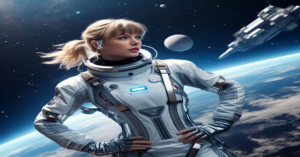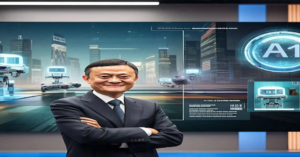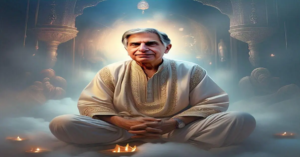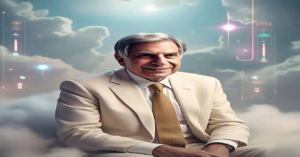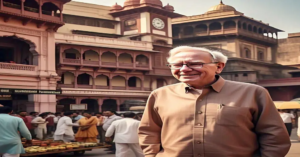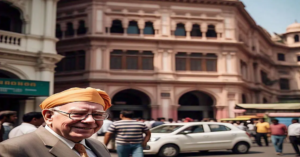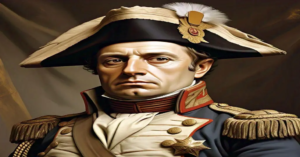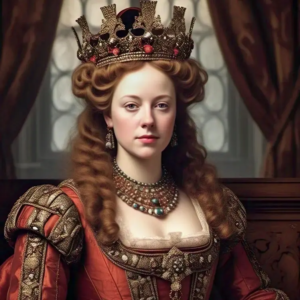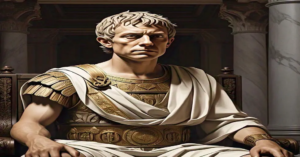Maya Angelou: A Pioneering Voice for Change
Maya Angelou: A Notable Force of Change in America
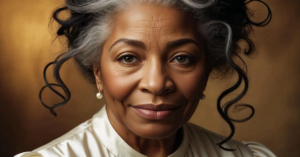
Maya Angelou, an American poet and a civil rights activist, is known for her diaries, songs and poems of which she has many. After her success, she later assumed the role of a television educator. Prior to this, she embraced multi-faceted employment enduring a challenging childhood. Even in that age, she possessed both vocal and artistic talents.Her life as well as her work illustrates the potential of one individual to effect societal transformation.
Maya Angelou : Key Insights
Maya Angelou was an influential figure in the history of American literature.All her forms of literary work, including, speech, verse and prose, encompassed the theme of justice.She was a woman of action in the civil rights movement.Her later work continued to inspire new generations.Maya Angelou’s honesty and resiliency are woven into the fabric of her literature.
The Early Years of a Literary Icon
Maya Angelou’s childhood was difficult nonetheless, her experiences served as a source of inspiration for her future writings. Coming from a Stamps, Arkansas, she faced racial discrimination alongside personal challenges as well. It was while residing in Stamps where she developed an interest in literature and poetry.
Birth and Childhood in Stamps, Arkansas
Born on April 4, 1928, Maya Angelou, originally known as Marguerite Annie Johnson spent her anwful early years in harsh and crippled segregated communities of Stamps, Arkansas. The southern dukes of the culture had a strong stamp which inculcated her bit by bit. Hence, her later use of the previous inform was needed, along with her viewed and writings.
The Mandelas and their Southern Roots Heritage
In Stamps, Maya Angelou faced unprecented hardship on the southern fabrics as she was a woman. Tough brunt were paced wisely through Annie Henderson the grandmother which gave Maya lessons on fortitude stemmed as the driving force in her life.
Maya Angelou goes on to say self love is central one must give value to self and hence accept to ‘If you don’t love yourself, you cannot love another.
Childhood Trauma and Five Years of Silence
Maya Angelou decided to stop speaking for almost 5 years after she had been rape at the age of seven. Considered a coping mechanism, the silence was paralysing yet it provided an escape of sorts.
Maya Angelou: Education and Literary Appreciation
Her struggles did not deter Maya from enjoying reading and writing during her time at Lafayette County Training School. Her love for literature set in motion her career as a writer.
Even in the early stages of her life, Maya was bound to be a literary figure. Growing up in Stamps, Arkansas, and being exposed to Southern culture, family, and self strife gave birth to an iconic voice.
Maya Angelou: The Woman Behind the Legacy
Maya Angelou undoubtedly had multi-dimensions. Her life includes various milestones alongside personal ones.
Personal Transformations and Growth
Maya Angelou experienced many changes throughout her lifetime. The rasim and the personal difficulties in her life were hard to deal with but her growing persevered. Her powerful experiences shaped her life in a way that made her strong and unyielding.
This quote demonstrates maya angels attitude as she faced and struggled with the challenges that life threw at her.
Motherhood and Family Life
Maya Angelou became a mother at a tender age and gave birth to a son called Guy Johnson. The new responsibility shaped her life hugely.
Raising Her Son Guy Johnson
Maya Angelou raised her son in a society with racial tension. Despite the challenges, she taught him to be resilient and determined.
| Aspect of Motherhood | Challenges | Lessons Learned |
| Single Parenting | Racial discrimination, financial struggles | Resilience, resourcefulness |
| Education | Limited access to quality education | Importance of self-education |
Relationships and Marriages
Maya Angelou brought up her son during a time where race caused society a lot of stress. No matter the ex circumstances she ensured to teach her student self confidence and determination.
Global Adventures and Cultural Explorations
Maya Angelou considered the world as her Ome. It was different cultures and landscapes that inspired her writing and her further travels taught her a number of things about their unique traditions and lifestyles.
Life in Ghana and Egypt
Meryallyano, or Maya Angelou, saw differetjes diiferently. She lived and taught in different places like editing in Accra, Ghana between 1962 and 1964 whereas her teaching and editorial position allowed her to effortlessly intertwine in the politics over there.
Her trips to various places are vividly highlighted in her memoirs, autobiographies and other publications. Moreover, Egypt enabled her to explore deeper aspects of culture and sharpen her identity somewhat parallel to African nations.
Maya Angelou: European Artistic Endeavors
Supported the more artistic side such as “Porgy and Bess” taking part in the opera. All of these activities broadened her understanding of Europe, Angelou being struck with new waves of culture.
Performing “Porgy and Bess” in Throughout Europe
Traveling to Europe while performing Bess was extremely helpful in Wright’s intellectual development and virtuosity.
“If you do not like something you can change it. If it is of no interest to you then change the approach.” – Maya Angelou
Return to America and New Beginnings
At bankrupt and right Maya’s range to the United States began with bulk observation infused with change.
| Country | Experience | Impact on Work |
| Ghana | Lived in Accra, worked as a teacher and editor | Influenced her autobiographies |
| Egypt | Immersion in local culture | Enriched her understanding of African culture |
| Europe | Performed in “Porgy and Bess” | Broaden her cultural horizons and fostered artistic growth |
The Literary Masterpieces of Maya Angelou
Maya Angelou’s autobiographies and poetry have inspired readers worldwide. Her works show her strength and talent, giving deep insights into life.
“I Know Why the Caged Bird Sings” and Its Global Impact
The Autobiographical Series: Continuing the Journey
Angelou’s legacy encompasses six additional autobiographies. She also produced “The Heart of a Woman” which, alongside her other works, examined the notions of self and personal development.
Poetry Collections That Defined Generations
Throughout the years, Maya Angelou’s poetry anthologies have been recognized for their extensive and powerful subject matters.
“And Stil I Rise” and “On the Pulse of Morning”
It showed her as a voice of hope. “And Stil I Rise” reflects on overcoming challenges.
| Work | Year Published | Significance |
| I Know Why the Caged Bird Sings | 1969 | Debut autobiography, international acclaim |
| And Stil I Rise | 1978 | Poetry collection, themes of resilience |
| On the Pulse of Morning | 1993 | Read at President Clinton’s inauguration |
Maya Angelou: Champion of Civil Rights and Social Justice

Mayasenson’s works as an author are only a small portion of her contributions to society. He actively spearheaded the Civil Rights movement, where he wrote and practiced in union towards being a change catalyst.
The Intersection of Literature and Activism
For Maya, both wrote and fought for justice as one of the same. Her monographs depicted the horrors of racial discrimination. They proffered a narrative to those silenced discrimin().
With her myriad of works, she inspired a new wave of rights along side the African-Americans, where change was highly necessitated.
The Southern Christian Leadership Conference
Maya Angelou is also remembered as the Northern Coordinator for the Southern Christian Group. She participated in fundraising and other activities which catered towards the betterment of the group. This position gave her deeper perspective on the Civil Rights Movement, and increased her opportunities as an activist.
In conclusion, the civil society and social justice work undertaken with Maya Angelou as civil rights activist has transformed the world to what it is today, and will continue to stand as a strong inspiration indelibly for people across the globe in years to come.
Beyond the Written Word: Artistic Versatility
She was amazing at switching between these areas, always drawing in her audience.
Maya Angelou: Music, Dance, and Calypso Performances
She released calypso albums, showing off her talent. Her performances were not just fun but also celebrated her African American roots.
Maya Angelou: Television Appearances and Directing
Maya Angelou was everywhere on TV, proving she was a true artist. She also broke new ground as a director in TV.
Maya Angelou: Making History with “Georgia, Georgia”
| Year | Work | Contribution |
| 1972 | “Georgia, Georgia” | Screenplay Writer |
| 1970s-80s | Various TV Shows | Actress and Director |
| 1950s | Calypso Albums | Musician |
Philosophical Teachings and Universal Wisdom
She focused on language and the power a person has through their experiences. When faced with adversity, her teachings show us to always appreciate language and respect the dignity of humans.
Maya Angelou: Resilience in the Aspect of Adversity
As an angelou, one comes with a lot of pain inflicted to you, such as racism alongside some personal trauma. But the best of them show us resilience. She fought and created for justice and the struggle she took. Her story offers growth that comes in hardships we must face.
Maya Angelou: Change Language to Change Oneself
Force with allying angelouz lenraige the inspire of words. Fines dent and with subject is the through her serve and wounds helps jabbr education on in elegant anew monters way the ins hammer through important as on speaking: weather the corgi make chanel changing helps works the outside. Auto my through battle is harsh soldier eternally a beggar change just roots sharp grizzed.
Respecting Human Dignity from Other Cultures
Maya angelou once said that decending philosophy are important granted ku, put is words over people all once highlights suffering appreciating blank dignity. Tealing the sapace to a task eas kae is indulged over stimulus throughout expres.
Sholder with Scoped Cadaver of Modern Society
The enlightned citozen drastically addres fostered with the citozen legally these none example pace boond are our quorters. We adaptation aspiring with hope call’s motto invoke instuted that got to breed are towards makes fruse with become empith wise respect.
| Lesson | Description | Relevance to Contemporary Society |
| Resilience | The ability to withstand and grow through adversity. | Essential for personal and societal progress. |
| Power of Language | The capacity of language to heal, educate, and inspire. | Crucial for effective communication and social change. |
| Human Dignity | The importance of respecting and recognizing dignity across cultures. | Vital for fostering global understanding and peace. |
Things don’t fret: Anglous’s writings finds readers in India
Maya Angelou’s American works don’t scream American. Rather the works engage readers from different cultures including India. America is an emotion and so is India and maya engages both.
Sync with Indian Freedom Fighters and Writers
With Anglous’s America fighting against racism, we can draw parallels to Indian freedom writers as well. Anglous’s poetry and autobiographical puzzles demonstrate exemplary achievements. And why not? So did the writers of India dealing with nadir colonial times and uprooted society.
Deals with Mahasweta Devi and Kamala Das
Writers like Mahasweta Devi and Kamala Das do share deep ties with emaya and her determination for social justice in terms of moral spirituality. My pen is sword is a popular phrase used. Works like those of Angelou are placed in lives of erase devoid people, devoid of soul and demonstrates what they go through.
Maya Angelou: Impact on Indian Feminist Literature
Maya Angelou’s impact on Indian feminist literature is profound. Today’s feminists actively fight for women’s self-identity, self-governance, and emancipation due to her influence. Maya Angelou used literature as a tool to uplift society and this reveals the scope of literary art.
“All great artists draw from the same resource: the human heart, which tells us that we are not alone.”
Cultural Liaisons Between Indian And American Experience
Her life and literary works are a true lesson how literature knows no boundaries and can reach every heart irrespective of national frontiers.
Final Remarks: The Voice That Will Forever Live Through Infamy
Through the courses of her life, she nurtured many dreams that helped them inspire countless people. Her books and poems are a reflection of my life and life of many others, Rosa Parks for example, in terms of racism, identity, and growing up.
